Jo Willems on creating the dream world of Slumberland
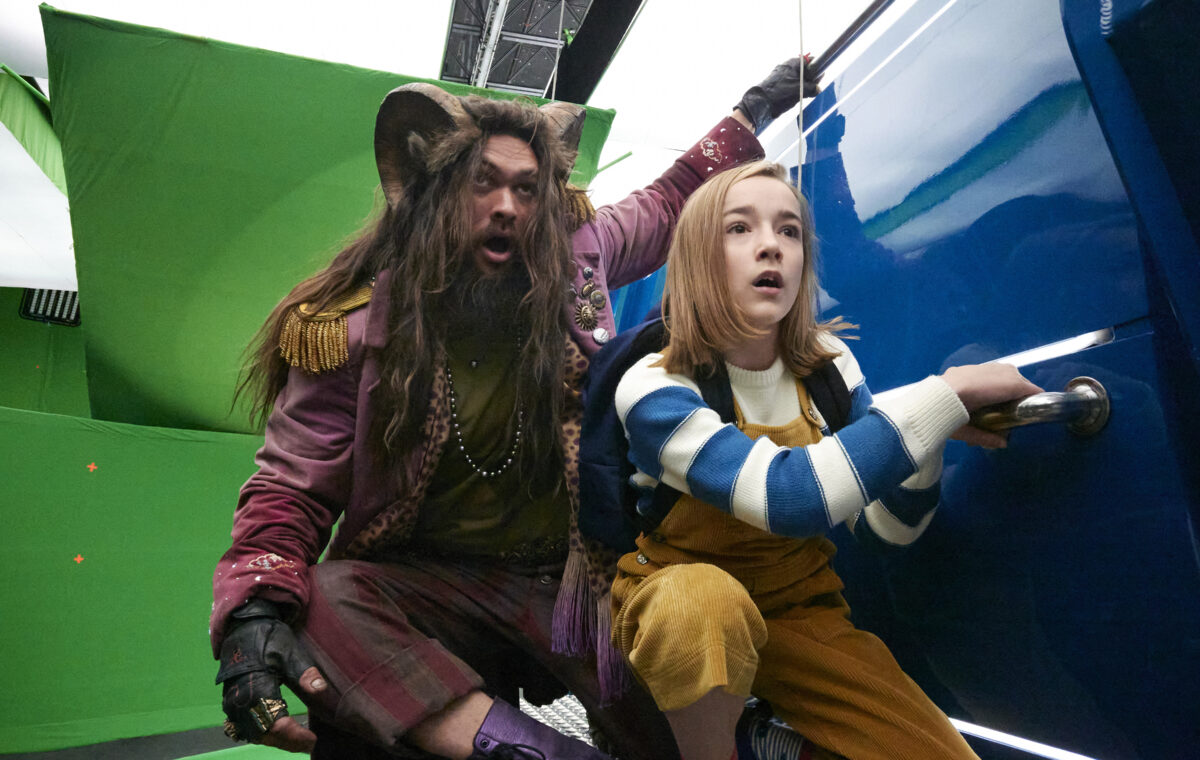
Loosely based on the Little Nemo comic strips, Slumberland follows Nemo (Marlow Barkley) and her adventures through the dreamworld of Slumberland. After discovering a secret map, Nemo is accompanied by the eccentric outlaw, Flip (Jason Momoa) on a quest to find a pearl that will grant Nemo her most desired wish. In the hope of finding the pearl and reuniting with her father, Nemo and Flip must navigate the nightmares and dangers of the dreamworld.
Slumberland marks Jo Willem’s fifth feature collaboration with director Francis Lawrence and is available to stream on Netflix.
Where did you train as a cinematographer?
I studied at the Sint Lukas School of Arts in Brussels, but left after a few years and went to the London Film School in the early nineties.
After film school I started working as an electrician as I didn’t have enough experience as a DP. I worked on all sorts of shoots from music videos to commercials to films. I learned from some great cinematographers, got to know the equipment, but also got insight to how shoots functioned on a practical level. I’d go from a video for Oasis to doing a week on the underwater unit of James Bond.
My career as a cinematographer started in music videos a couple of years later. It was a great field to explore and experiment with different looks and ideas. It was a really fun time to be in London as well. One of my closest collaborators from those early days was David Slade. After we both moved to the US, we did our first film together in 2003, which was Hard Candy. I’ve since mostly worked in the US market, and only done a couple of things outside of that. I did a British horror movie called His House with Remi Weekes.
How did you first get involved with Slumberland?
I worked with the director, Francis Lawrence, in the early 2000’s on a few music videos and we got on well. We both developed our own movie careers over the next few years, but bumped back into each other in 2010 on a TV pilot for Fox TV with Kiefer Sutherland. I was shooting another project at Fox and the producers put me in touch with Francis. I’ve since done the majority of his work, including 3 of the Hunger Games movies. We work well together and when he asked me to do Slumberland, I was up for it.
What were your initial conversations with Francis Lawrence about the look of the film?
One of the first things we got out of the way, was that we were going to shoot Alexa 65 and work with a very wide pallet of lenses. I don’t think we ever went past a 50mm. Because of the size of that sensor, you can shoot with a really wide perspective without the image bending. Since the film plays a lot in a young girl’s dreams, we wanted it to be as immersive as possible and let the audience be part of that experience. This wide lensing also creates a lot of intimacy with the characters.
We went a little bit wider in the dreams then we did in the real world but we didn’t make it too different. We wanted the transitions from reality to dream be smooth and not too jarring.
We talked about how dark we could or could not go in Nemo’s nightmares. It is a family film, but we felt it was ok to push the darkness as a contrast with the more fun magical dream sequences. Those nightmares also have a colder feel in color.
We talked a lot about color and saturation. I originally wanted it to have a 70’s color slide feel but it quickly felt a bit too nostalgic and I stayed more contemporary but still with bold colours.
The one space that needed to feel more mundane and the opposite of magical was the apartment. It has a bland, almost corporate feel, but at the same time it couldn’t feel threatening in any way. I still kept a warmth to the space but it was flatter and not as saturated as the dream sequences. The apartment set was built on stage and had a rosco soft backdrop that was about 30 x 7 meters. It was a front day and back night drop. It was easier than hanging a big blue screen out of the windows.
I let myself be led visually by production and costume design rather than create from an island without awareness. It all has to fit together as a whole. During pre-production, I would go and walk into the art department’s office and look at their artwork and be inspired by what they were doing. Not to say that cinematography plays a lesser role, but it should not stand out in the wrong way. It should feel harmonious with all the other elements that tell the story.
Was there creative freedom with your own approach to shooting the different worlds?
I never felt like I was doing any work that I didn’t believe in or that was not supportive of the story the way Francis and I wanted to tell it. No one came to me saying I had to do something in a different way, or that something was too dark or too this or that. So, considering all those things, I felt I had creative freedom in doing my work. It’s always fun to work on that kind of project, where you are not held back.
Could you discuss your approach to filming from the perspective of Nemo?
It is her story. And particularly in her dreams we are really on the journey with her. You want to put the audience with her and live the story with her. She is the protagonist of the whole movie, even though Jason Momoa plays a pretty big part. It is Nemo’s story. It’s really the choice of lenses and blocking that makes you feel connected to her.
What creative references did you look at? Did you look at any of the original Little Nemo comics for reference?
We watched some stuff, but not too much. There was a Chanel commercial directed by Jean-Pierre Jeunet with Audrey Tatou that I remember liking as a reference. Some of the Jean-Pierre Jeunet and Marc Caro films had some relevance for colour and lensing. I did read the original comics by Winsor McCay that were published in the early 1900’s, but a film is a different form than a comic strip. It’s more interesting to interpret a piece of work and push towards a personal direction rather than copying it. Covers of songs are also more interesting if they are done in the artist’s own voice rather than it being a carbon copy.
Were any sequences from the film taken from the comics?
The bed sequence comes out of the comics, which was one of my favorites. It starts in her bedroom and leads all the way through the city and ends with the bed jumping in the water where she travels to back to the lighthouse. All of Nemo’s scenes on the bed were shot on stage and the plates were shot on location in Toronto. The lighting we did on her had to match the lighting from the plates on real streets. The water sequence was done with Nemo on the bed at our blue screen pool set with the interactive aurora borealis lighting. The opening of the scene was shot in her bedroom on stage. The bedroom’s scene was almost all shot on a 12mm. I had a large softbox outside the window that represented a warm streetlight. The tricky part was the animation of the bed. Four stunt guys in green suits animated the bed in the room. The camera operator was on the bed with her for some of the shots. It would have been impossible to do with a gimbal and have the bed move out of the room. The city shots were done with the bed on a computerized gimbal.
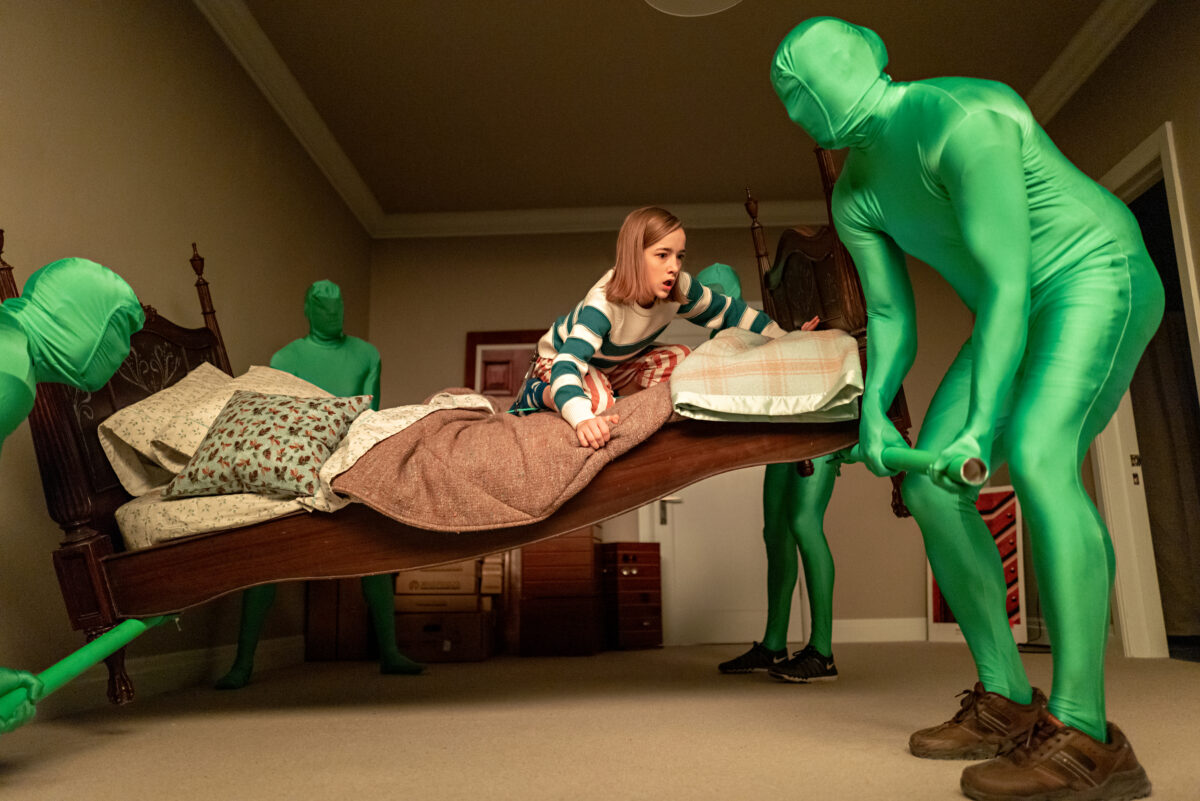
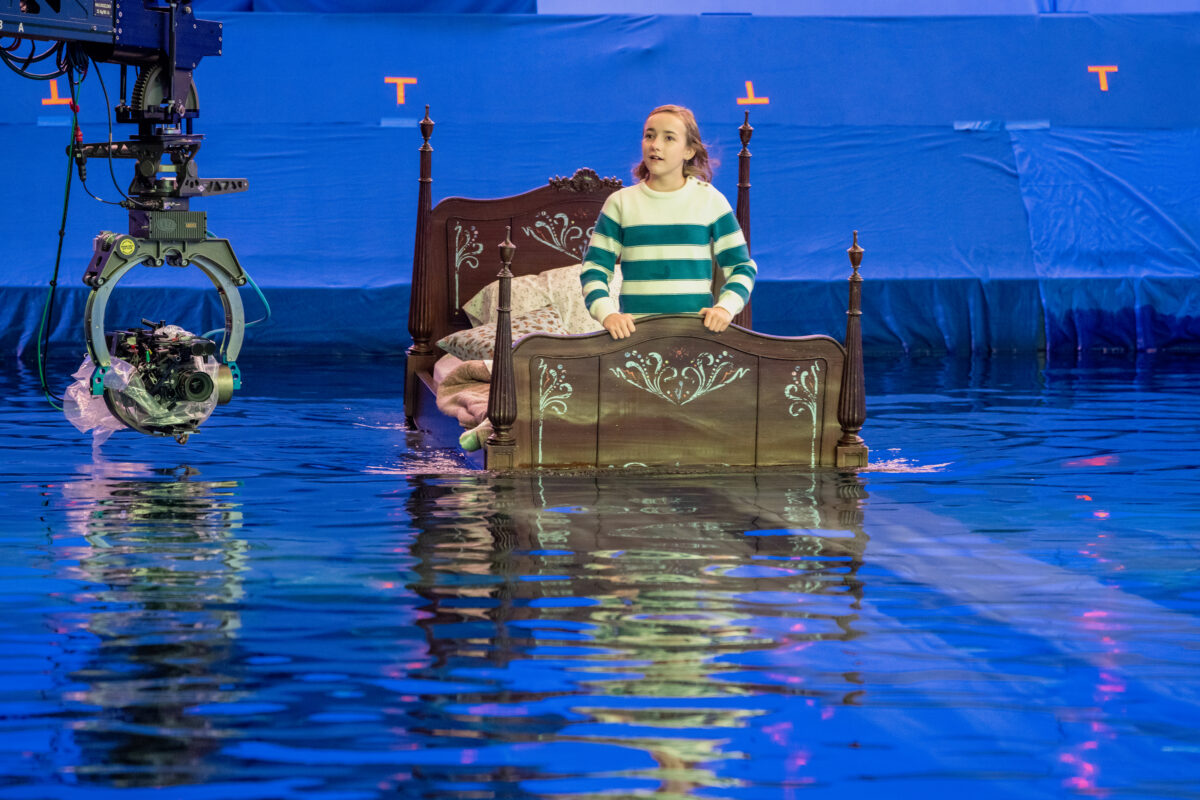
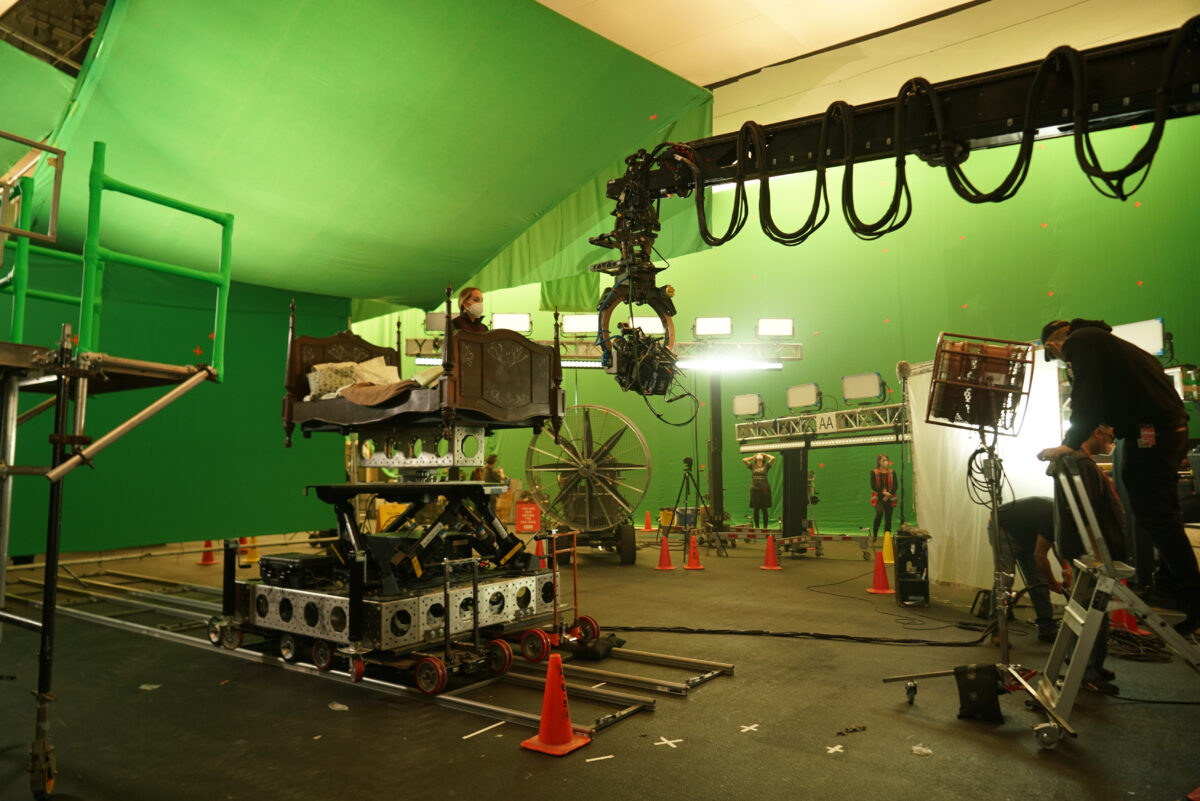
What was the most challenging shot to capture?
The hardest shot was the truck submerging into the water after the chase. The truck had to drop from dry to fully filled up with water, with the actors in it, who swim through a portal in the glove box at the end of the scene. The truck was on a hydraulic system so we could do it over and over. Water and electricity are always tricky because of safety. Water insulated LED lights lit up the inside of the truck. If any of the elements don’t work, you basically can’t shoot. We had multiple cameras in and outside the truck so the actors didn’t have to do the shot too many times. Our lead actress was only 12 so we needed her to be comfortable doing this work while being fully submerged. You just want everyone to be safe.
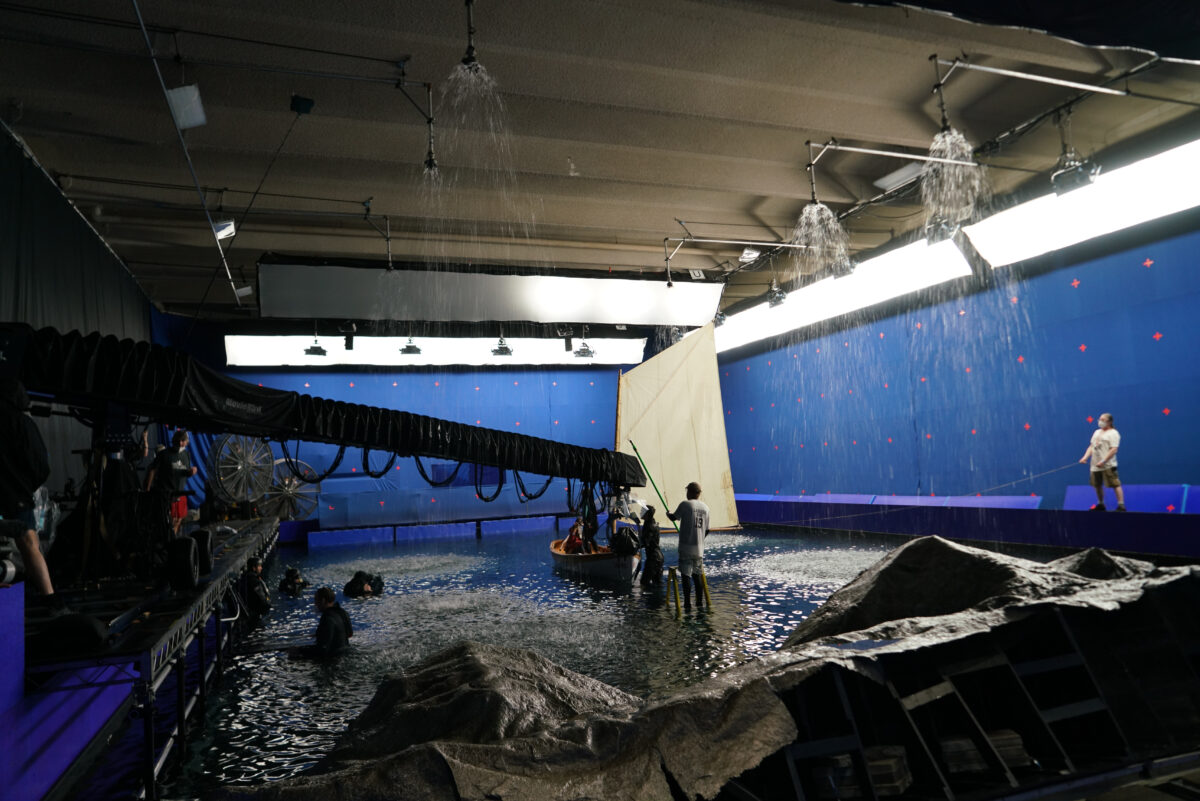
The set was built inside of a local pool we turned into a blue screen stage for all of our boat work. Someone posted a nice before and after video on Instagram from the boat sequence. @filmlights
The truck almost never moved in the actual chase sequence. Adrian De Wet shot the second unit part of some of the driving shots over a few days, but most of the time the truck just sits static on a shaking platform so it could move a little bit. Wind, rain, dimming lights, and camera movement made it feel like there was motion in the vehicle.

The ballroom sequence was complex. We shot at a real hotel in Toronto with big windows facing south. The first part of a DP’s job is solving logistical issues, the second part is the creative stuff. The scene is a Cuban Ballroom lit with warm sunlight. Towards the end of the scene it turns into Nemo’s nightmare, the scene goes from this warm sunlight into a cold blue tone. The scene was shot on the fourth floor over five days. The lighting had to be consistent over the five days. We’d start during the day and would shoot until after sunset. We couldn’t put any heavy cranes outside as there was a train line under the street right outside the windows. Rico Emerson, the key grip found a way of hanging eight LRX – 18Ks, that were cantilevered 20 feet out over the street. The trussing had steel cables running all the way up to the 20th floor of the hotel for more support. Each light was controllable remotely. We had a manually controlled blue diffusion that we could drop over the windows, so that the room would go into a cool tone. Another white diffusion was also ready in case the sun broke out.
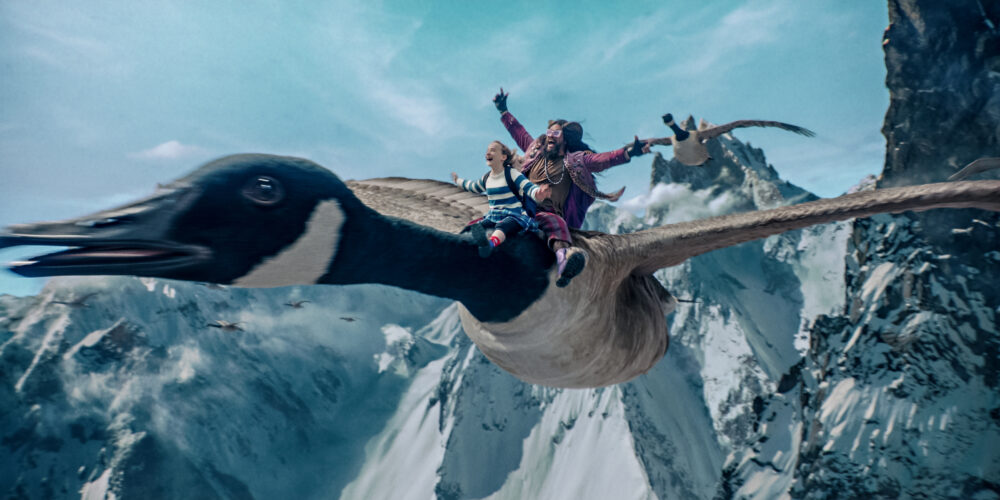
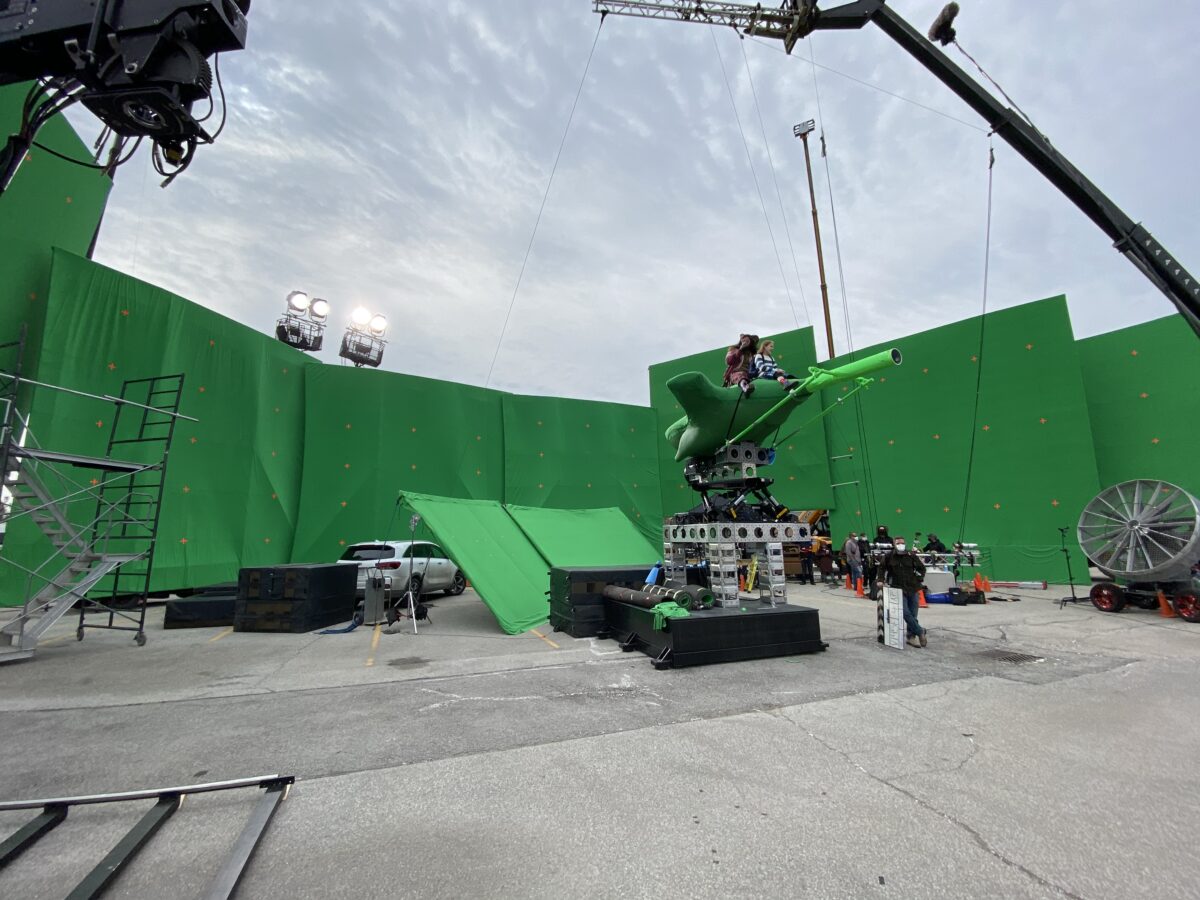
The goose sequence was fun to work out. The actors were sitting on a computerized gimbal and the camera does all the movement. Most of it was done with a crane. Some of the larger shots were done with cable cam. We shot it all outside so the light would feel more natural. A lot of those sequences were previs’d, so you figure out the details beforehand.
Did you have a close collaboration with the VFX team?
Absolutely. I try and work closely with all departments for the right flow of information, but VFX is high on the list of importance. Adrian De Wet, VFX supervisor, has been on the team with Francis since Hunger Games as well. There are 1150 VFX shots in this film. You don’t want to be held back by VFX limitations, but you need to know beforehand how things will be shot and how they will be finished in VFX. For a lot of the complex sequences we have previs animations.
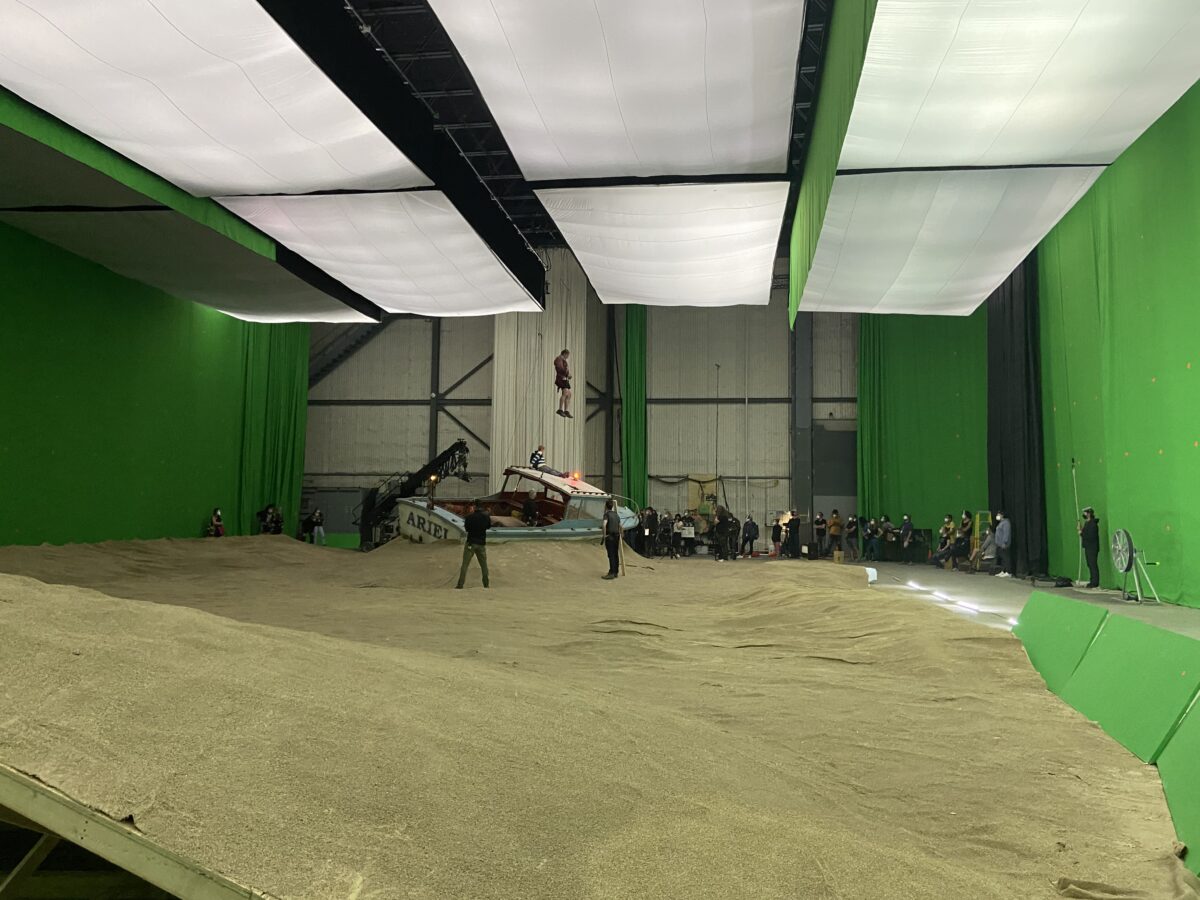
Adrian was also our second unit director. Both the island set and the snow mountain set were built in a parking lot in Toronto. Adrian went to Vancouver to shoot all the water plates and the mountain plates. All those angles and lighting directions need to match what we plan on the main shoot, so yes, collaborating closely with VFX is important.
Sometimes previs can be deceptive, as they can make animations that can’t always be achieved on camera, so those have to be adjusted a little bit at times.
The success of this kind of project lies in the pre-production. Our shoot was pushed at a certain point and our prep was extended by a couple months. We would go over the previs sequences again and again and new ideas would always turn up as we’d go through it.
The butterfly sequence in the ballroom, where all the dancers are represented by butterflies, were originally going to be real dancers. However, we shot in Canada and you could only have a certain amount of people in a room as we shot throughout the pandemic. So, we shot plates for dancers that were going to be added to the scene in post, but then there was an idea about turning all the dancers into butterflies. The end result was exactly what Francis wanted and fit the feeling of the film, but it originated by practical issues.
How was the toilet sequence captured?
The toilet had a cut out at the back and connected to a big water tank behind the wall. There was just enough space for Jason to come through it. It was fairly easy in a way, but it was done for real.
When the bathroom turns into the elevator was fun to work out as well. The three characters stand in the bathroom. The whole sequence was shot on greenscreen. I needed to figure out the whole move and I needed to work out all of the lighting and all the dimming and all of the timing and the colour inside the elevator and inside that room had to match. Not that it was complicated, but it was important in terms of the look and the timing and I had to work out the camera movement that went more than 360 degrees around them and then pulls all the way back. It was more of a poor man’s motion control. I think we ended up using a techno dolly: a crane that can do a repeatable move. That worked out really well, with some help from VFX.
Could you discuss your experience of working on a large scope production aesthetic for Netflix?
Netflix gave us all the support we needed. It has the quality of a large scale, cinematic movie and they never held us back. I had a great local crew in Toronto. Gaffer was Scotti Philips, first ac Dean Stinchcombe, DIT, Jeff Bowes, key grip Rico Emerson, B camera / underwater operator Ian Seabrook. I only brought A camera operator/ Steadicam op Dave Thompson. I’ve done almost all of my movies with him since 2007. I hope to shoot in Toronto again.
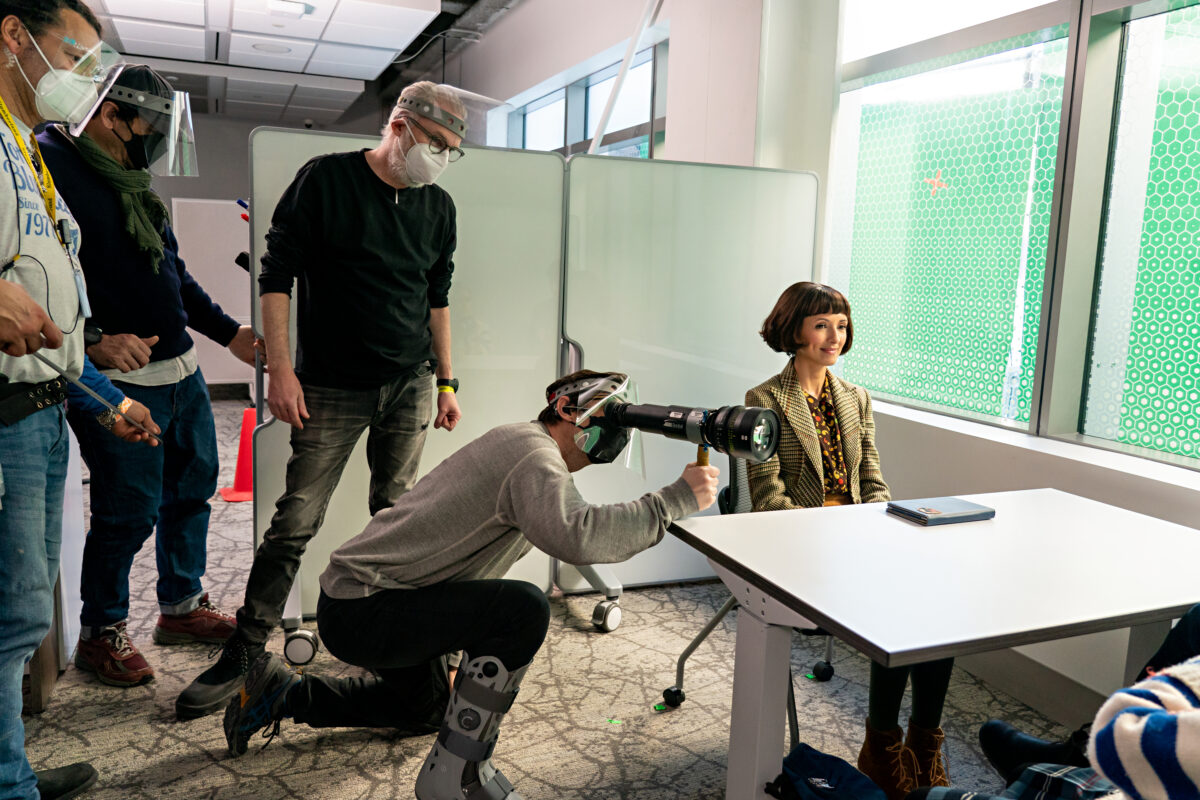
How do you look back at the experience of Slumberland?
We shot during the pandemic and were in full lockdown in Toronto for most of the 90-day shoot. We had a great crew and a tight-knit group of people and I had a really good time shooting it. I felt that by the end of this film I had done some stuff, I had never done before and got through some very complex ideas. It was really satisfying to do something completely different from what I had done before. Working with Francis puts you in so many different situations and you rarely repeat yourself from project to project.
By Oliver Webb.
